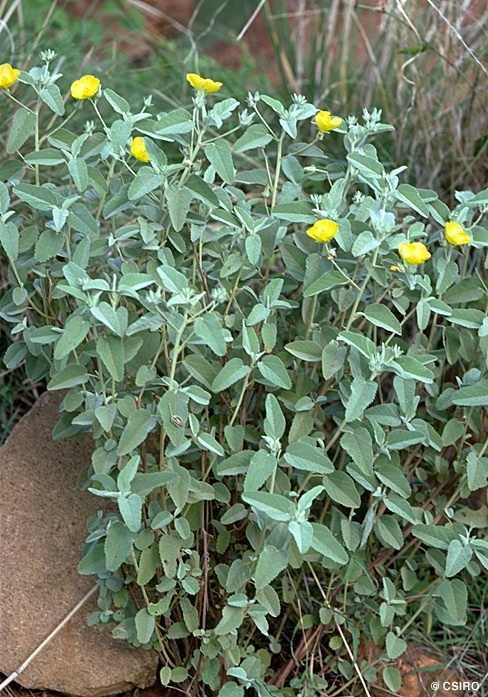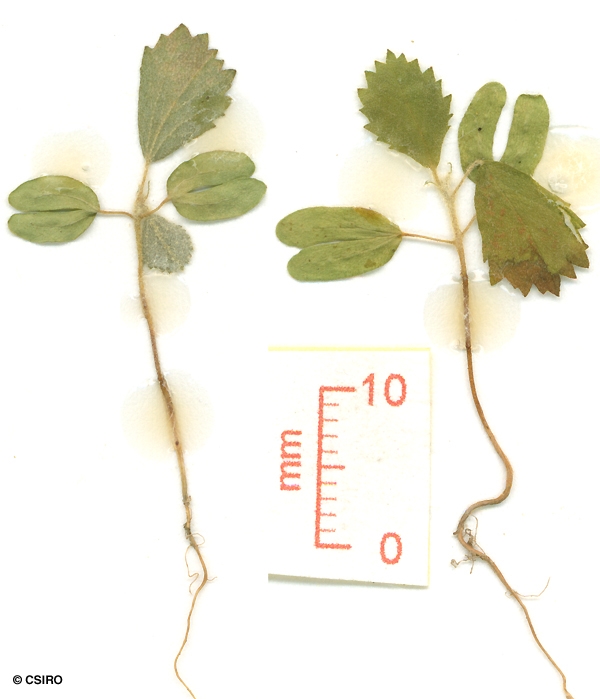Australian Tropical Rainforest Plants - Online edition
Melhania oblongifolia F.Muell.






Mueller, F.J.H. von (1858) Fragmenta Phytographiae Australiae 1: 69. Type: In collibus petraeis Australiae borealis et boreali-occidentalis.
Hibiscus, Velvet; Velvet Hibiscus
Usually flowers and fruits as a herb but occasionally grows into a shrub 1 m tall.
Pedicels about 5-10 mm long. Epicalyx of 3-5 lobes, about 10-12 x 2 mm, clothed in stellate hairs. Sepals about 14-17 mm long, stellate hairy on the outer surface, inner surface glabrous. Petals glabrous, withering and remaining around the ovary following anthesis. Stamens five, alternating with five larger petaloid staminodes. Pollen yellow. Ovary densely clothed in long stellate or branched hairs.
Capsules about 7-9 mm long, densely stellate hairy on the outer surface. Calyx and epicalyx persistent at the base. Seeds about 1.5 x 1 mm. Testa tuberculate. Cotyledons folded.
Cotyledons about 7-9 x 6-7 mm +/- bilobed. First pair of true leaves simple, truncate and toothed towards the apex. At the tenth leaf stage: leaves ovate, margin with about 20-30 teeth on each side except for the basal section. Both the upper and lower surfaces of the leaf blade densely clothed in matted stellate hairs. Petiole about 15 mm long. Petiole and stem also clothed in stellate hairs. Stipules filiform, about 5-8 mm long and clothed in stellate hairs. Seed germination time 105 to 212 days.
Probably endemic to Australia, occurs in WA, NT, CYP, NEQ, CEQ and most of the rest of Australia except Victoria and Tasmania. Altitudinal range in northern Australia from near sea level(?) to 650 m. Grows as an understory plant in a broad range of vegetation communities, in open woodland and eucalypt forest, but also in vine thickets and monsoon forest.
This is an outstanding small shrub suitable for gardens in drier areas. It should be treated as an annual. The showy flowers are yellow.





